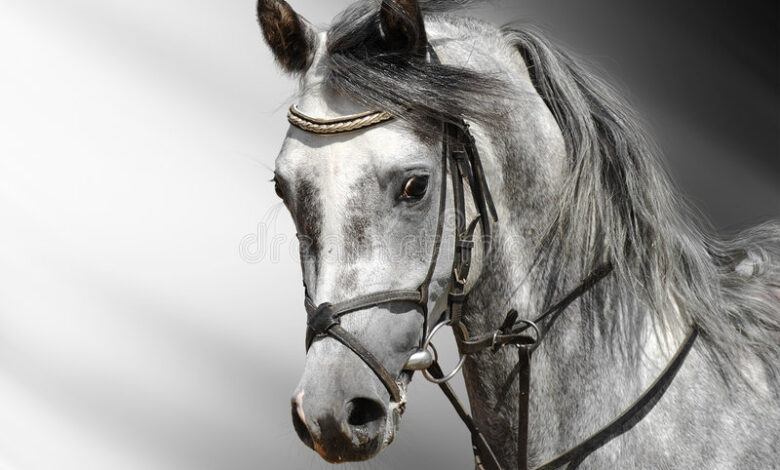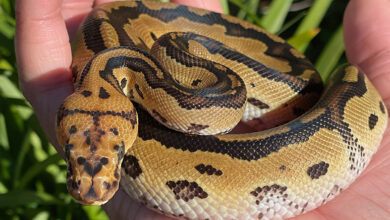All About Grey Horses: Grooming, Breeding, And Taking Care Of Them

Oftentimes gorgeous, a Dapple Grey Horse coat has lighter-colored rings or circles over an otherwise dark grey background.
Some grey horses don’t even have dapples when they become grey, so keeping your horse clean is essential for showcasing its unique pattern.
The Dapple Grey Horse coat is just a transient feature; over the course of a few years, the horse will lose its dappling and its coat will fade to a softer shade of grey or white.
Flea-Bitten Grey
Flea-bitten grey horses often pass for freckled white mares or geldings. Flea Bitten Grey Horse may develop patches of coloration inside their usually entirely grey or white coats as a result of the flea-biting process.
Since the marking is only visible on the horse’s hair and not in the skin’s color, these specks are unique from Appaloosa marks.
More Grey Variations
Most riders and horse experts refer to their horses as Dapple Grey Horse or flea-bitten grey. But, in recent years, riders and breeders have started to use terms like steel grey, rose grey, and grey roan.
The grey gene modifies the underlying base color in a subtle way, as shown by each of these words.
Rose Grey
The process of becoming grey might sometimes start with rose grey. Horses with a base coat color of chestnut or bay (i.e., a brown coat) may experience the greying process as a uniform distribution of white fur throughout their coat.
Because of the contrast between the brown and white hairs, the resulting coat color might seem pinkish or gold, giving the horse an attractive, though transient, rose grey hue.
Rose grey horses might concurrently display Dapple Grey Horse coats. Rose grey, like dapples, may only endure for a year or two until the red or brown fur is completely depigmented.
Steel Grey
The Steel grey horses, often called iron grey, have dark, gunmetal-like coats. Steel grey arises when a black horse is depigmented by the grey gene.
The majority of the coat is still jet black, but part of the fur has begun to turn grey or white, giving it a “steel grey” look.
Since UV rays may damage coats and alter how light reflects on a dark coat, steel grey horses who spend a lot of time in direct sunshine may seem rose grey in certain spots.
Grey Roan
The term grey roan may refer to genetically diverse but visually related colors.
White and colored fur mix in the Roan coat color. They may make a black horse seem grey. Roans have white fur due of a genetic color modifier, not a mutation.
Roan horses won’t become white like grey horses. The horses have white or grey fur on their bodies, but their basic color is still on their faces, legs, tails, and manes.
Roan and grey genes may coexist in horses. A genetic color test or careful genetic monitoring may reveal the color of your horse’s complex coat.
How Do Grey Horse Genes Operate
The grey hue is caused by a gene mutation called STX17G, according to this pub med research from the Veterinary Clinics of North America. STX17G affects melanocytes’ behavior, causing a horse’s coat to progressively depigment. This gene mutation may cause melanomas and vitiligo.
According to the University Of Minnesota College Of Veterinary Medicine, 80% of Dapple Grey Horse older than 15 years old have melanoma, with the tail, belly, eyelids, and snout being the most prevalent locations.
How Do You Get A Grey Horse
Most people who want a grey horse end up buying one already in existence, but some breeders intentionally create grey horses by mating two grey horses (which has a 75% chance of producing a grey foal) or by mating two horses from a breed in which nearly all of the horses are grey, like the Lipizzaner, the Per heron, and the Andalusian.
For More Info: Better Pets Life
What Is A Grey Horse Called
Many names are used to describe grey horses. It is okay to refer to a Dapple Grey Horse simply as a grey horse (spelling it grey is also acceptable), but there are also particular names for the many shades of grey that may be seen on horses.
For instance, rose grey horses, flea-bitten grey horses, Dapple Grey Horse, steel grey horses, and grey roan horses are examples of different shades of grey. Read on to find out more about the many shades of grey that may be seen in horses.
Are Grey Horses Born Grey
No. The grey gene causes depigmentation in the horse’s coat, gradually changing the color as the animal matures. Since the pace at which each grey horse becomes grey varies from animal to animal, it is widely accepted that paler grey horses are older and darker Dapple Grey Horse are younger.
The hair surrounding a foal’s eye may be a good indicator of whether or not it will eventually become grey, therefore breeders often look there first. White or grey fur often surrounds the eyes of foals that have the grey gene.
Are Grey Horses Rare
Grey horses are uncommon. Grey horses are unusual because the gene steadily depigments the coat, making them grey for just 3–4 years. Genetically Dapple Grey Horse become white or flea-bitten (speckled) white around 6–8 years old following the grey gene depigmentation process.
Grey genes vary per horse breed. Grey is frequent in unusual breeds like Lipizzaner, per heron, and Andalusian.
Why Are White Horses Called Grey
White horses are either elderly grey horses or albino horses. No gene can make a horse genetically white, just grey or albino. Because of this, Dapple Grey Horse with entirely depigmented white coats are nonetheless called grey horses. Darker skin beneath their white fur gives these horses a greyish hue. The horse’s eyes and nose are darker than its white coat.
Paint or pinto horses with frame overoes may produce solid white foals. Deadly White Overo Syndrome, a hereditary disease, kills white foals.





